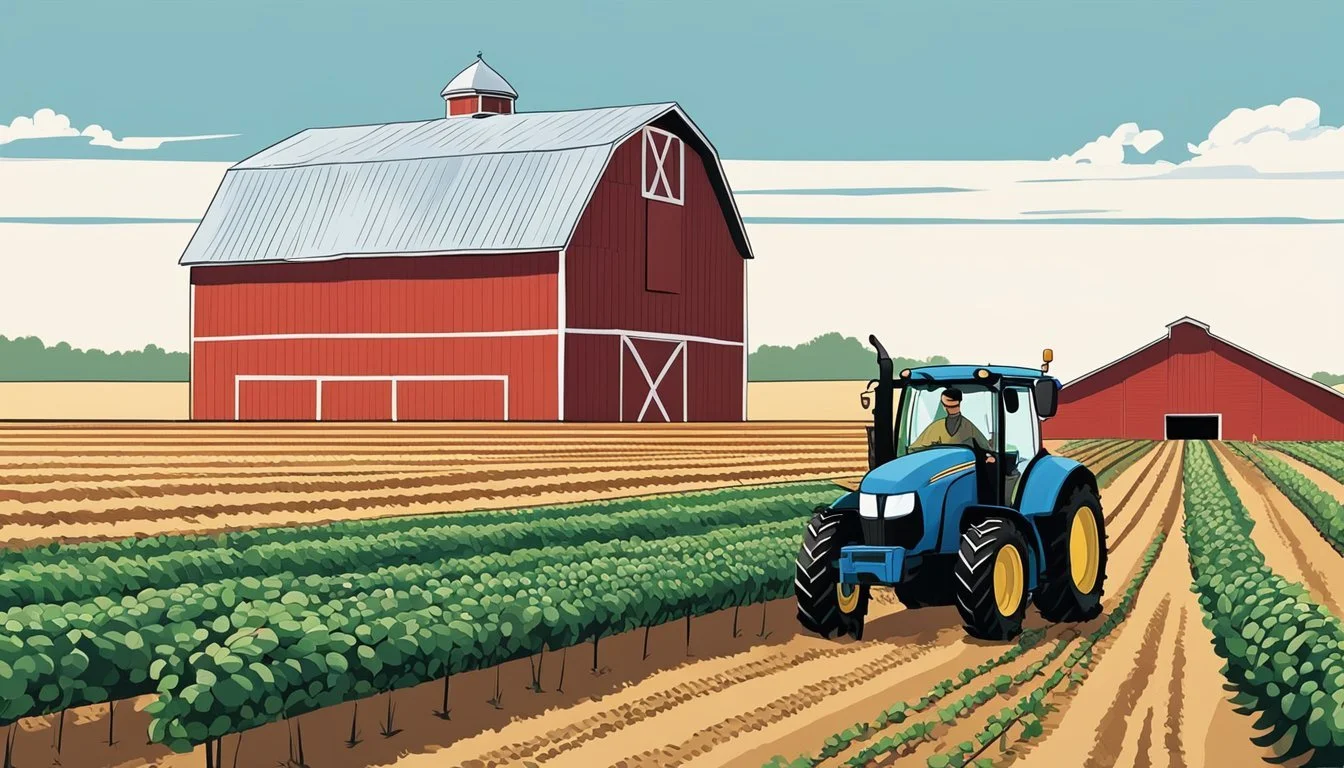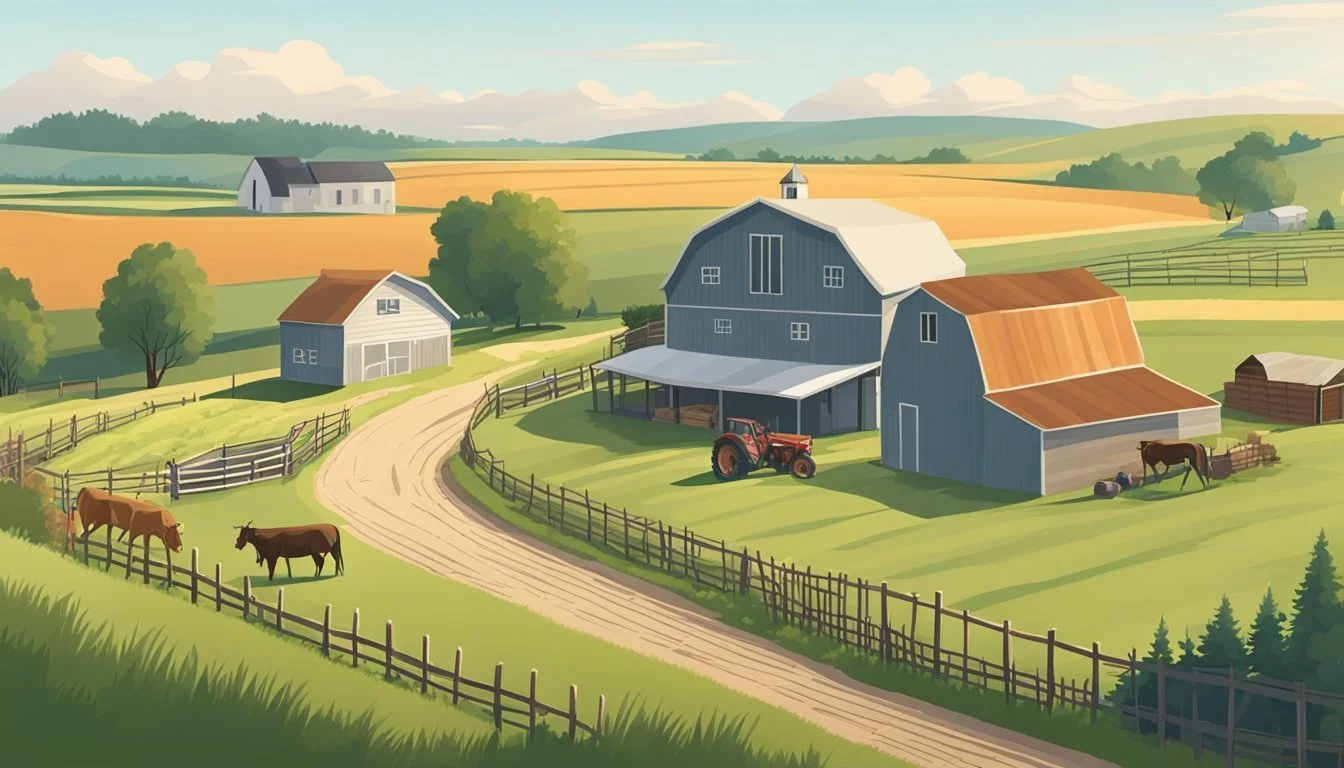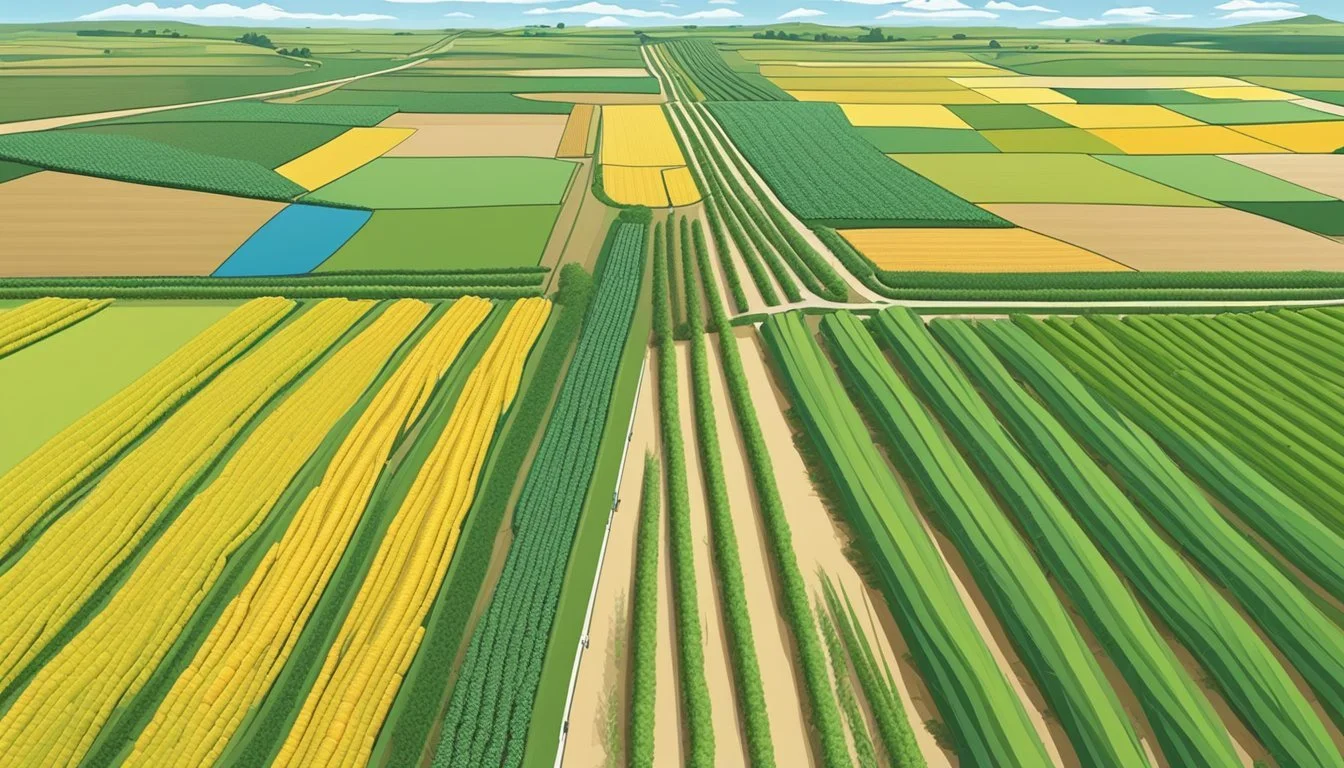Right to Farm Law in Nebraska
Understanding Agricultural Protections
The Right to Farm Law in Nebraska serves as a legislative shield for agricultural operations, ensuring that farms cannot be deemed either public or private nuisances under certain conditions. This law is particularly significant in a state where agriculture plays a central role in both the economy and the way of life. By setting a legal precedent that protects existing agricultural entities from nuisance claims, Nebraska echoes the sentiments of many states where farming is integral, underscoring the value placed on this industry's sustainability and growth.
At its core, Nebraska's Right to Farm Law is rooted in the idea that farms that predate changes in land use or nearby land occupancy should not be penalized for continuing their established farming practices. In an environment where urban sprawl can lead to new residential areas encroaching on farmland, this law attempts to safeguard farms from legal disputes with new neighbors who might take issue with odors, sounds, or other byproducts of farm activities. The law provides a stable framework for farm operations to continue traditional practices without the looming threat of nuisance-based lawsuits.
Agricultural operations in Nebraska, particularly those over ten acres engaged in the commercial production of farm products, are encouraged and supported by such legal protections. Although the law does not explicitly protect farmland or address the rights of family-run farms in its text, it implicitly supports these farming operations by focusing on limiting nuisance claims that might arise due to the normal workings of a farm. This stance has generated discussions about the balance between agricultural interests and environmental concerns, illustrating the complexities inherent in agricultural legislation.
Historical Background
The evolution of Right to Farm Laws and their implementation in Nebraska highlight the state's efforts to balance agricultural growth with property rights.
Origins of Right to Farm Laws
Right to Farm laws originated in the United States as a response to the growing conflicts between agricultural operations and expanding urban areas. Designed to protect established farms from nuisance lawsuits, these laws acknowledge the necessary discomforts associated with agricultural processes while aiming to safeguard farmers from undue legal burden.
Nebraska Right to Farm Act
In Nebraska, the Right to Farm Act was first enacted in 1982 with the goal of curbing urban sprawl and assisting family farmers in the face of developmental pressures. The Act provides legal protection for agricultural operations from nuisance lawsuits when non-agricultural land uses come into proximity with farm lands. Despite these protections, the Nebraska Farm Bureau acknowledges a 26 percent decrease in the number of farms since the passage of the act—a loss reflecting broader challenges within the agricultural sector.
Legislative Bill 662, introduced by State Sen. Beau Ballard, seeks to amend the existing Right to Farm legislation to bolster protections for farmers. The proposed adjustments aim to further shield farmers, emphasizing the Nebraska Legislature's ongoing commitment to the Right to Farm principles amid dynamic land use and societal concerns.
Right to Farm Law Provisions
The Right to Farm Law in Nebraska aims to shield agricultural operations from nuisance lawsuits and regulate change in land use. Its provisions balance the interests of agricultural operations with those of neighboring properties, restricting certain legal challenges and defining operational compliance.
Core Principles
The Nebraska Right to Farm Act pivots on the fundamental idea that agricultural operations should be protected from nuisance lawsuits if they conform to lawful practices and have not changed the use of their land to the detriment of their neighbors. It outlines specific principles for land over ten acres in size that's used for commercial agricultural production.
Protection of agricultural operations: Farms and farm operations are safeguarded against nuisance suits under certain conditions, promoting a stable agricultural sector.
Statute of Limitations: There's a restrictive time frame within which one can initiate nuisance lawsuits against farming operations.
Nuisance Protection
Nebraska's Right to Farm Act offers specific nuisance protections:
Ensures that farmers and livestock operations are protected from lawsuits that may arise from the normal noise, odor, dust, or other byproducts produced by their activities.
Conditions this protection on the premise that there hasn't been a substantial change on the farm itself that would otherwise nullify this protection.
Compliance and Limitations
To benefit from the Right to Farm provisions, farmers and their operations must be in compliance with state laws, and certain limitations are set:
Compliance: Farmers must follow legitimate farming practices and local, state, and federal laws to qualify for protection.
Limitations: Protections apply only if there’s been a change in land use or occupancy around the locality of the farm, not on the farm itself.
The Right to Farm Law in Nebraska serves as a statutory shield, reinforcing the stability of the agricultural industry by setting clear boundaries on nuisance-related legal actions and compliance expectations.
Legal Challenges and Interpretation
Nebraska's Right-to-Farm law has been subject to various legal challenges, often revolving around its interpretation by courts, as plaintiffs seek restitution for nuisances they assert are caused by farming operations. The interpretation of this law by the Nebraska Supreme Court has significantly shaped the application and outcomes of these challenges.
Court Precedents
Courts have set precedents by applying the Right-to-Farm Law in interpreting whether a farming practice qualifies as a nuisance and can thus form the basis for a successful lawsuit. Plaintiffs who experience negative effects typically argue that a farming operation has overstepped the protections granted by the law. Conversely, farmers assert that the law shields their practices, effectively allowing for agricultural growth and operation continuity. Several cases may set precedence by affirming the law's protective scope for farmers, thus influencing future legal challenges.
Role of the Nebraska Supreme Court
The Nebraska Supreme Court plays a crucial role in interpreting the Right-to-Farm Law, thereby influencing its enforcement and the success or failure of nuisance lawsuits. In doing so, the court examines the legal challenges posed and determines the balance between the rights of farmers against those of affected neighbors. The court's interpretation can uphold or limit the extent to which the Right-to-Farm law protects agricultural operations, directly impacting the viability of nuisance claims brought before the courts.
Environmental and Neighbor Relations
Nebraska's Right to Farm laws have been a point of contention where environmental concerns and neighbor relations intersect. Amendments to such laws shape the landscape of agricultural practices and community health.
Environmental Considerations
Environment and Pollution: Recent legislative proposals in Nebraska aim to strengthen farmers' protections, potentially affecting how environmental concerns are addressed. Critiques from environmentalists focus on issues such as runoff and pollution which can arise from large-scale farming operations. These environmental risks highlight the law's impact beyond the farm's boundaries.
Runoff Management:
Prevention: Utilization of buffer zones to reduce sediment and nutrient runoff into waterways.
Monitoring: Regular testing of water sources to identify potential contaminants.
Neighbor Disputes and Odor Management
Neighbor Relations and Odor: Under current Nebraska law, neighbors have a two-year timeframe to launch lawsuits about nuisances, often related to livestock odor. The proposed changes to the Right to Farm Act could alter the dynamics between farmers and their neighbors.
Odor Reduction Practices:
Manure Management: Strategies to reduce odor emissions, including regular removal and composting.
Technology: Investment in odor-reducing technologies, such as biofilters or anaerobic digesters.
Dispute Resolution:
Communication: Establishing open lines of dialogue between farmers and neighbors to preemptively address concerns.
Mediation: Offering mediation services to resolve disputes without resorting to litigation.
Agricultural Practices and Regulations
In the state of Nebraska, regulations surrounding agricultural practices are in place to ensure the health and safety of its residents while promoting efficient farming activities. These regulations touch on various aspects of farming, including livestock and poultry operations, adherence to federal and state laws, as well as land use regulations that balance farming needs with environmental considerations.
Livestock and Poultry Operations
Nebraska's farms are subject to rules that govern the management of livestock and poultry, aimed at minimizing environmental impacts. For instance, the state requires environmental permitting for certain operations, ensuring that any waste from these farming practices does not harm local ecosystems or neighboring properties. Zoning requirements may also dictate where livestock operations can be situated, preserving the tranquility of residential areas and mitigating nuisances such as noise and odor.
Environmental Concerns: Manure management, water quality protection
Zoning: Land use stipulations, spatial planning
Federal and State Regulations
Farmers in Nebraska must comply with both federal and state regulations. These laws are designed to promote safe and sustainable agricultural practices while protecting the rights of farmers. Notably, the Nebraska Right to Farm Act provides a legal framework that defends farm operations from nuisance lawsuits provided they comply with acceptable farming practices and have been established prior to surrounding non-agricultural developments.
Nebraska Right to Farm Act: Legal protection framework
Federal Oversight: Compliance with EPA standards, USDA regulations
Agricultural Law and Land Use
Agricultural law in Nebraska encompasses stipulations on how farmland is utilized. Land use regulations help ensure that agricultural activities are in harmony with environmental preservation and urban development plans. Farms over ten acres are primarily devoted to the commercial production of farm products and typically must maintain practices that are in accordance with agricultural best practices and land use laws to continue operating without excessive legal pressure.
Commercial Farming: Defined as farm operations over ten acres
Sustainable Practices: Regulations encouraging responsible farming methods
Impact on Local Economy and Society
Nebraska's Right to Farm Law has tangible implications on its local economy and the societal perception of agriculture. The law's economic influence extends to investment levels and job creation within farming communities, while affecting opinions on modern farming practices and technology.
Economic Effects on Communities
Nebraska's agricultural sector is a cornerstone of the state's economy. Investment in farming operations, whether through innovation or expansion, has a ripple effect on local economies. The implementation of Right to Farm laws has been associated with preserving existing agricultural jobs and potentially creating new opportunities as farms innovate and adopt new technologies. Data suggests a decline in the number of farms since the law's inception, yet farmland area loss remains minimal, indicating larger but fewer farms.
Societal Perceptions of Farming
The societal perception of farming in Nebraska has been shaped by the enactment of the Right to Farm Law. On one hand, the law reinforces the importance of agriculture to Nebraska's identity and its economy. On the other, the reduction in the number of farms has raised concerns about the prioritization of larger agricultural businesses over smaller family-owned farms. This shift challenges traditional perceptions of rural community farming and raises questions about the future of farming practices and their alignment with societal values.
The Future of Right to Farm
In Nebraska, the Right to Farm laws are evolving, shaped by legislative revisions aiming to safeguard agricultural practices while balancing environmental concerns and the impacts of climate change on farming.
Legislative Updates and Amendments
Legislators in Nebraska proposed changes to the state's Right to Farm Act, with revisions designed to solidify protections for farmers against nuisance lawsuits. LB 662 is one such bill that has garnered attention. It seeks to address the fundamental legal challenges in agribusiness, focusing on livestock nuisance lawsuits, and mirrors the intent of previous efforts to enhance agricultural rights seen in 2019.
LB 591 targets farmland lease regulations, potentially influencing the tenure security for farmers, which is a significant facet of the Right to Farm's future stability. Funding for the Nebraska Mesonet System also surfaces in legislative discussions, emphasizing the necessity of the network in providing real-time weather information.
Emerging Issues and Climate Change
As climate change persists, it poses substantial challenges to Nebraska's agricultural resilience. The weather station network, powered by the Mesonet system, is critical in giving farmers access to real-time weather data pivotal for making informed decisions.
Future challenges include aligning the Right to Farm Act Amendments with ever-evolving weather patterns and ensuring Mesonet System Funding is sufficient to maintain an expansive Weather Station Network. This need for a robust and responsive weather information system is essential, as unpredictable climate conditions continue to create uncertainties for farming communities.








